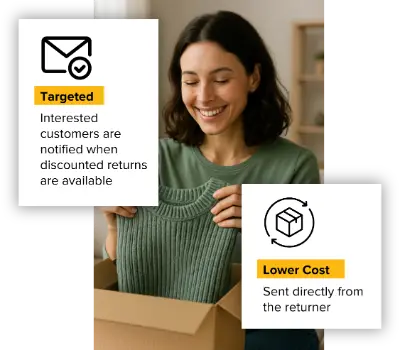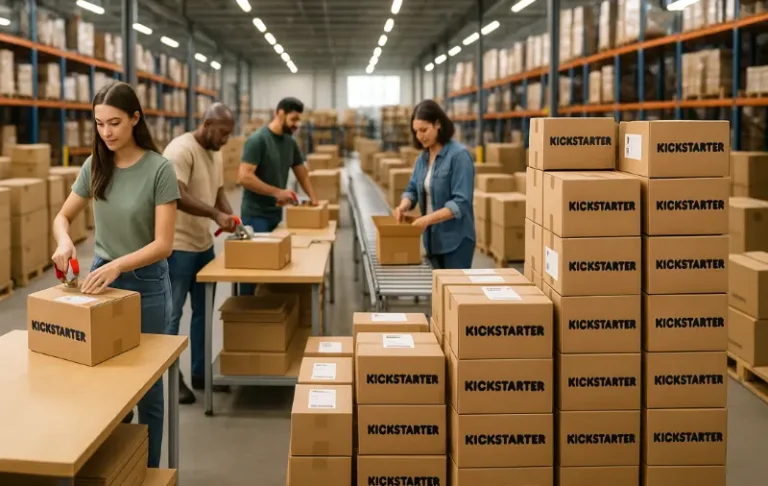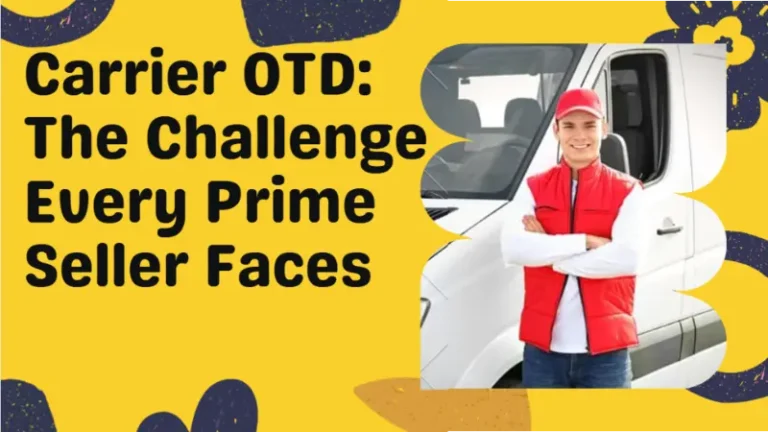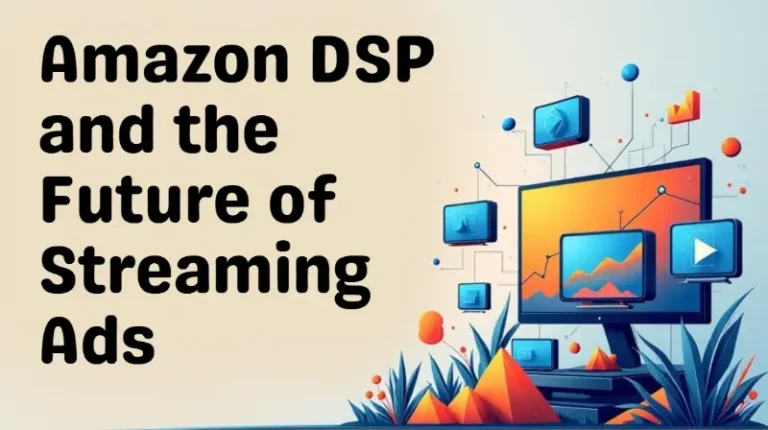Amazon’s E-Commerce Fulfillment Changes: Expert Insights and Free Tools for Sellers

Last updated on February 3, 2025
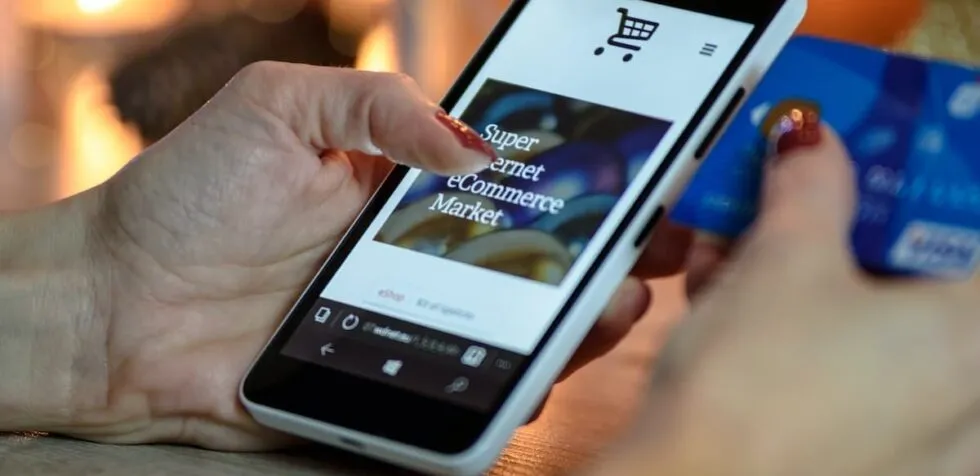
In this article
 31 minutes
31 minutes
Podcast: How to Take Advantage of the Changes in Ecommerce Fulfillment – Cahoot
The Sellernomics podcast discusses e-commerce order fulfillment changes and offers free tools for Amazon sellers. Cahoot CEO, Manish Chowdhary, discusses how the pandemic affected Amazon’s order fulfillment strategy and how sellers can keep up with these changes. Amazon is focusing on profitability, so fees have increased for fulfillment, Fulfilled By Amazon (FBA), warehouse storage and removal, and the small and light order fulfillment program has moved from a weight-based to a dimensional weight pricing system. This change has caused concern for FBA sellers who rely on the program. Chowdhary offers tools to help ecommerce sellers track inventory, refunds, and automate their seller accounts. The podcast is sponsored by Getida, which offers $400 in free FBA reimbursements. The hosts, Rob Stanley and Lisa, provide insights and ask questions about order fulfillment changes for the benefit of their listeners.
Speaker 1:
Welcome to the Sellernomics podcast. In today’s special episode, we are going to share some great tools and software available to Amazon Sellers. Special thanks to our sponsor, Getida. Did you know you can get $400 in free FBA reimbursements at getida.com/sellernomics? Now it is time to show us what you got with your host, Rob Stanley.
Speaker 2:
Hey, everyone. Welcome to another great show on the Sellernomics on Show Us What You Got. We got a really good one today. I got Manish Chowdhary. He’s going to be coming on in just a minute from Cahoot, and we’re going to be doing a really cool thing, talking about how to take advantage of changes in e-commerce fulfillment. But real quick, I’m going to bring in the room Lisa, our amazing other host, Lisa.
Speaker 3:
Hi, everybody.
Speaker 2:
Hi, Lisa. So Lisa, this is a field you’re familiar with because you come from this whole area of order fulfillment. This will be an exciting one to have you a part of and obviously, an area that I am not super familiar with. So we’re going to lean on you for the questions for Manish when he gets in the room here. Let’s bring him in and let’s definitely have Manish enter and talk with. Hey, Manish. How you doing?
Speaker 4:
Hi, Rob. Pleasure to be here. Thanks for having me.
Speaker 2:
Absolutely, absolutely. Manish’s got a great presentation already lined up for us, so let’s jump right into it. Manish, why don’t you take it away? It’s time to show us what you got.
Speaker 4:
Thank you, Rob. Thank you, Lisa. Great to be here and thank you everybody for joining. Want to take you quickly through a little bit of what’s happening in the world of e-commerce fulfillment. By way of introduction, my name is Manish Chowdhary. I’m the founder and CEO of Cahoot. I’ve been involved with e-commerce for over two decades, founded and built one of the first e-commerce platforms out there way back in 2000, and then more recently founded and built the world’s first peer-to-peer order fulfillment services network. We help brands and retailers succeed through free and fast shipping. As we know today, half your shopping experience is your shipping experience. Just to give you a little bit of background as to what’s happened in the world of Amazon, Amazon went into overdrive mode on the fulfillment side when the pandemic hit. You know all remember when March of… Was it 2019 or when?
2020 when pandemic came in, and then most sellers could not send their products to Amazon because Amazon was focused on only essential goods. They were turning away sellers and that really led Amazon to really triple down. In fact, Amazon spent more in two years over the pandemic in terms of expanding their order fulfillment footprint than they did in the previous 18. By way of simple comparison, Amazon built 517 facilities in 2021, added over 150 million square feet of space, and then we heard in Q1 of last year when they announced their earnings that Amazon actually made a loss and they had overhired people in Q1, and that basically Amazon was focused on profitability. Amazon still wants to continue focusing more on profitability. And then we heard two rounds of fulfillment fee increases. One in January. This was announced earlier last year, fulfillment fees, FBA fees went up 2% to 12%, storage fees went up and the removal fees went up almost 100% and it came in two different tranches, basically.
In February 1 of 2022, already it was announced previously the FBA fees is going up. And why this is important is just to understand the background of where FBA is headed, where the world is headed. And then more recently, end of April, FBA announced this fuel surcharge or whatever you want to call it, inflation surcharge of 5% on top of whatever the order fulfillment fees were, what Amazon has already increased. So all of this is taking quite a bite out of the seller’s profits and something that the sellers need to pay close attention to. One big change, which sellers, some of you are familiar, some of you may might not be familiar, but it’s a really important change that happened in January of this year, the change to the small and light fulfillment program by FBA. Previously, it used to be if you are selling a small and light item, which is essentially this criteria, it has to be under $10.
The selling price, it cannot be more than 18 by 14 by eight, that’s on the longest side. The product could not be greater than 18 inches. And previously, as long as it was under three pounds, it qualified under the small and light program, but Amazon has gone and changed it from purely weight-based to a dimensional weight pricing and that has created a lot of stir, a lot of challenges for a lot of sellers, particularly the FBA sellers that rely on the small and light program. And just by way of example, if you look at this, the salt and pepper shakers, a four ounce item, previously, when dimensional weight pricing wasn’t in effect, you could ship it for $2.53. Now it’s $4.42. Almost 80% increase. You look at the Christmas ornament. It used to be nine-ounce item, but because of the dimension of the product, now it is using dimensional weight and now you’re going to pay $5.19.
Slash Your Fulfillment Costs by Up to 30%
Cut shipping expenses by 30% and boost profit with Cahoot's AI-optimized fulfillment services and modern tech —no overheads and no humans required!
I'm Interested in Saving Time and MoneySo just imagine, if you’re selling for $10 and $5.19 is just the FBA fee before the commission and everything else, that’s a big, big hit. And certain items that used to classify as small and light, for example, this marker set is clearly is no longer qualifies as small and light and has been moved to the standard category, which is now priced at $6.75. So all of this has very large material changes and if sellers are not already familiar, they should. FBA is great. This is the easiest way for Amazon sellers or online sellers to pretty much get in business. It is great if you’re selling small and light items. If you don’t sell a lot of multiples or bundles because they’re a pain, you need to prep them, and also if you don’t prep them, then of course, the pricing of that can get pretty out of control because the way FBA prices itself is based on the skewer, the ASIN, and if you sell multiples, you’ll pay twice as much.
And I’ve got some examples coming up so stick around. Receiving delays. I know that this is something that the sellers had a lot of trouble last year, especially in Q4. Long, long receiving delays. Things are a lot better now, but we are not out on the woodworks. There is still considerable delays that I hear from sellers almost every single day. And new product launches. Yes, Amazon moved from basically ASIN level inventory limits to an account level limit. So it has certainly eased the pain on inventory limits, but it’s not completely gone. IPI, the inventory performance index is still in place. And when you are thinking about adding a lot of new items or new product launches, whether it’s now or Q4 or back-to-school, you need to pay close attention to that because that can have an impact on your account health and your inventory restock limits. And also, if you’re selling on other channels like Walmart, Walmart clearly prohibits sellers from shipping the products from Amazon. Yes, they’ve been somewhat quiet about it, but that’s changing because Walmart is very focused on Walmart Fulfillment Services and they don’t want a package going out with prime branding to a Walmart customer. Yes, Amazon has a pilot program where they can do neutral branding, but majority of the items are still going in FBA boxes.
Speaker 2:
Hey, Manish. Quick question came in on this and I’m going to summarize it because it was kind of long. I don’t know if you just read recently, but there was a whole thing about some of the Amazon warehouses either closing or they stopped building them or something like that, which, just my personal opinion, it’s weird. They had this whole thing where they were limiting people shipping items in, they were having people take items out of stock, which I don’t know if they were doing that more for the quality of the items that were in their warehouses, but I remember at one point it was because they were out of warehouse space. So they start building all these warehouses. Now I’m reading, I think today I even read the article, too, about them actually closing or discontinuing some of these warehouses. Obviously, you don’t work at Amazon, but what’s your opinion on that? Because it seems like, “Hey, not enough space. Now we have too much space.” So it was weird. How do you think that might affect sellers?
Speaker 4:
Yeah, that’s a great question, Rob. Essentially, Amazon just recently announced the Q2, second quarter earnings, and at the end of first quarter, Amazon publicly admitted that they had excess capacity and they had decided to sublease. A lot of it is as many, many experts got it wrong that people overbuilt thinking that the pandemic growth is going to continue. You probably heard a couple of weeks ago Shopify laying off 10% of its workforce and likewise, Amazon had done two things. They had of course overbuilt in anticipation of higher demand and also Amazon’s Prime program, as you probably heard, a rollout of buy with Prime that would lead to greater demand and that the transition of the online growth will continue to grow at a pace that’s much higher than what we are expecting now after in the post-pandemic. And lastly, the biggest reason or contributor for Amazon shutting down some warehouses was excess labor capacity.
Amazon hired 14,000 additional workers or some 14,000 to 26,000 additional workers in Q1 and that was because of the Omicron virus, the variant that Amazon CFO, Brian Olsavsky, admitted that they had over-hired the people so they’re now back to normal levels in Q2. So some of those warehouses, they have shut down, however, I wouldn’t read too much into it. Amazon is such a large organization. Just because Amazon had a ton of excess capacity, there’s still plenty of excess capacity. The big picture for the sellers, what sellers need to be focused on is Amazon is going to continue focusing on profitability. They’re going to continue to raise rates as we’ve seen, so keep that in mind. And of course, having somebody like Getida on your side to find those reimbursements, find those missed savings is a big, big plus, especially if you’re spending 10%, 20% more. So overall that is the lay of the land, Rob. I don’t know if I answered your question.
Speaker 2:
No, that was perfect. That was perfect. Keep going. Thank you so much.
Speaker 4:
Thank you. Thank you. So FBA has been great for small and light as we all know, but if you look at this cables, great. $2.70 cents. It’s going to be a lot more expensive if you try to ship it yourself or use any third party logistics (3PL) company. Same thing with this, for example, the headphones. A 1.2 pounds small and light item, but look at this oversized dog bed. I think sellers, probably many of them, are misinformed, that FBS is always the cheapest option. In this case, as you can see, five-pound item, you could actually ship it for a lot less yourself. And also, not to mention the Q4 storage fees at Amazon is three times the regular storage fees and getting things in and out of Amazon during Q4 is very hard. So something to be aware of, something that you need to be focused on.
And also, one thing that a lot of sellers are probably not fully informed on is mixed cues orders. If you look at this example, if you’re selling socks, you could be selling anything. A pair of black socks and a pair of yellow socks, they’re two different SKUs. So you don’t get the benefit. It doesn’t really cost twice as much to ship the item, however, the way FBA pricing works is you will pay by the SKU, you’ll pay by the ASIN, by the unit. So it can get pretty expensive. And if you are using FBA for multichannel order fulfillment, let’s just take a quick example. You can see from the screen, it can really rack up. We did an analysis for another apparel brand and we could save them over $50,000 annually and not to mention not to deal with the limits and certainly, before counting the storage fee changes, Q4 surcharges.
Looking for a New 3PL? Start with this Free RFP Template
Cut weeks off your selection process. Avoid pitfalls. Get the only 3PL RFP checklist built for ecommerce brands, absolutely free.
Get My Free 3PL RFPSo if you’re selling four pairs of socks, that can make a big difference because it can take a nice bite out of your margin. If you are doing FBA multichannel fulfillment, it could be almost three times as expensive. Something that the sellers ought to be aware of. So as you’re selling on, say, Shopify or your own store or Walmart, and if you have apparel of these kind of SKU variations, you want to be aware of the cost implications. And I covered this earlier, that FBA receiving is still taking time. You could send by small parcel like a UPS, FedEx in small boxes, you can expect to receive them sooner, a five-day receiving generally speaking. But LTL receiving is still taking at least two weeks and this is, of course, we expect the holiday season to start early this year as it was last year. So you want to be mindful of that, that receiving delays are still. And items that are in transit, that are in the process of receiving also count towards your inventory restock limit.
So keep that in mind that the limit is calculated based on the items that are still in transit or in the process of receiving. Finally, I want to take you out of just the Amazon world and also talk about some of the recent developments. What’s happening in the world of fulfillment? The fulfillment war is heating up. April, just a couple of months ago, Amazon announced this Buy with Prime program. I’m not sure if Lisa, Rob, you’re familiar with, but this is a very popular or at least long-anticipated program that is still in beta. It’s by invitation only. It’s essentially extending your FBA, your prime membership to off Amazon channels. So if you are selling, let’s say, on WordPress or WooCommerce or your own customs store, like a big commerce store, you can now install this Buy with Prime button on the product page, on the checkout page.
And the Amazon Prime shopper one, they get that familiar badge that they’re familiar with, they get the date certain shippings that tells you right on the product page when your product will arrive and you get all the benefits of Amazon Prime. Free two-day shipping or without any minimum, free returns. And then when you log in, basically, your Amazon account credentials or Amazon account information will load up, all your preferences will show up. However, there’s a big challenge with this. While it might look very enticing and tantalizing to use it, but the whole purpose, if you’re doing DTC, most sellers that we talk to want to build a brand. They want to build and own that customer. They want to own the first party relationship and by introducing this Buy with Prime, you lose all of that because Amazon, of course, is not going to hand you all the customer data after the customer checks out because it’s still the Prime customer. Before I move on, Rob, Lisa, do you have anything that you want to add here or anything?
Speaker 3:
Yeah, I just wanted to get a little clarification around the Buy with Prime. So like you said, it’s invite only, it’s in beta right now and it sounds like it’s for current FBA sellers who have additional channels but they want to be able to fulfill with the same speed and have the credibility behind it. What opportunity, if any, is there for a,, let’s say, Shopify store owner who has a small and light product like the headphones or the cables you referenced before? What opportunity is there for them to use Buy With Prime if they don’t currently sell on Amazon? Is there any?
Speaker 4:
That’s a great question, Lisa. It is a by invitation only program right now. Amazon is beta testing this and they have initially invited mostly the existing FBA sellers that have an existing relationship with Amazon that are selling on Amazon, but they also sell elsewhere. So the only advice I have for non-FBA sellers and non-Amazon sellers is to join their waitlist and we hope that they’ll invite you soon. If you’ve been an FBA seller, then of course, your chances would be higher and as to when you’d be invited. But right now, Lisa, this is a by invitation only program and there’s not much more the seller can do except for joining the waitlist.
Speaker 3:
Got you. And I assume any of their inventory is going to be subject to IPI and weight and dimensions, minimums and things like that, even if they’re not currently selling on Amazon? If it’s in their warehouse, they’re going to have to abide by those guidelines, right?
Speaker 4:
Yeah, so this is still a very new program. There’s a very limited amount of information that is available to sellers and outsiders. Amazon is right now basically testing this with proven sellers and they are collecting feedback. They have been very reluctant in sharing a lot of information because they don’t want sellers to have any early impressions of how this would impact their IPI and others. So it’s too early to tell how this is going to affect, but clearly, Amazon building 517 new warehouses with excess capacity, it is part of them to acquire more customers and more inventory, but we don’t know as much. So I’m reluctant to provide advice that may or may not be accurate.
Speaker 3:
Got you. No worries there. We’ll all just have to see how it unfolds, I guess.
Speaker 4:
However, I’ve done a amazing webinar, actually. I spoke at a conference last month and there is a detailed information on Buy with Prime and how it impacts DTC sellers. So I’d encourage the viewers, if you’re interested in learning in depth, go to Cahoot.ai, go to the resources page and you’ll find my talk there and it goes into great detail about what the implications are and you’ll find some amazing information there.
Speaker 2:
Absolutely.
Speaker 4:
Cool. So moving on, of course, April, Amazon announced Buy with Prime. That really created shockwaves in the Shopify ecosystem. Shopify, as we know, they’ve been talking about this Shopify fulfillment services network since 2019, but I rarely speak to merchants who are actually using Shopify fulfillment services networks. For a lack of better word, it wasn’t going anywhere and as a result of this Amazon Buy with Prime announcement, they rushed and they acquired Deliver, which is one of the services that competes with Cahoot and that took place in late April, early May, I think. Shopify is going to pretty much rebrand that as a Shopify fulfillment services network and they call it Shop Promise, which is essentially the Shopify’s version of the Prime badge, which, of course, there is no consumer component, there is no membership so you don’t get your free Amazon videos or you don’t get free unlimited returns. They call it hassle-free returns, but it is basically a very similar version. You will check out using the Shopify account, you’ll basically will preload that information and then you qualify for two-day delivery.
Scale Faster with the World’s First Peer-to-Peer Fulfillment Network
Tap into a nationwide network of high-performance partner warehouses — expand capacity, cut shipping costs, and reach customers 1–2 days faster.
Explore Fulfillment NetworkBut again, even this is on waitlist. It’s by invitation only, so a Shopify merchant cannot just go and take advantage of it immediately. It remains to be seen how this is going to play out. And Walmart has announced that they’ve been pushing Walmart Fulfillment Services quite extensively. I spoke with the Walmart Head of Fulfillment. Previously, they were promoting other services like Deliver, but they’re now singularly focused on promoting Walmart Fulfillment Services and that’s why they’re cracking down on sellers that are trying to ship Walmart orders from Amazon, Amazon FBA. So I think they’re going to be doing more of that. And they’ve announced some partnerships with other technology providers that they will be building for next generation order fulfillment centers over the next three years that would cover 75% of the population and could speed up the… But there’s still a lot of limitations. Walmart, of course, do not ship international. There’s temperature control you cannot send, there’s a hazmat items are not acceptable. So there’s still a very long way to go.
By just way of comparison, Amazon built 517 fulfillment sortation distribution facilities in 2021 and it’s probably going to take Walmart three years to build four. So I don’t know how that is going to play out, but it’s certainly something that a lot of sellers are participating in because Walmart is also handing out some promotional discounts, but it’s going to be challenging but it remains to be seen. And just to touch on Buy with Prime, and I know we’re going to end the presentation shortly. Buy with Prime is a lot more than just fulfillment services. It’s essentially checkout. And as I shared, there is a excellent presentation for those who of you who are interested to go to our website, Cahoot.ai. Essentially, it’s wrapping Amazon Pay. Payments is one of the most lucrative pieces of the checkout process. It’s pure margin and that is what all these providers are interested in because they want you to checkout using their payment services.
Let’s say you put an item in the shopping cart and you abandon that cart, we know that Amazon Prime shoppers visit Amazon at least once a week, half of them buy at least once a week, and you’re talking 200 million members on the Amazon Prime network. So you bet if somebody abandons the cart, you will be targeted and retargeted on Amazon site. There’s a lot of implications for the brand because previously, you could set your own minimum for free shipping, like $49 or $69, but with Amazon Buy with Prime, it is basically there is no minimum. Average order value is going to go down. I call it the Trojan horse. It’s something that the merchants need to be fully aware of. If you’re an online seller, you’ve got Amazon FBA, which is great for Amazon sales, especially if you’re small and light. Walmart is pushing Walmart Fulfillment Services and Shopify is pushing Shopify fulfillment services network. Our belief is this creates a lot of challenge for the merchant because if you put yourself in the shoes of the seller, sellers don’t think about each fulfillment service as separate standalone.
They want to take care of business, they want to satisfy their customer with the least amount of hassle. So what it boils down to is distributed order fulfillment. It’s essentially, if you want to target two-day delivery, you need to have at least four strategic locations. If you want to target one-day guaranteed delivery using economical ground service, you need eight to nine strategic warehouses. That’s how all these services generally work. So if you break this down, it might look like rocket science, but it’s not. We at Cahoot do this because we support Amazon Prime customers, we support seller [inaudible 00:25:54] Prime program, so we know exactly how this works. You need to place your inventory smartly at the strategic locations. It is harder than you think because to determine what inventory should be placed where because you don’t want excess inventory, you don’t want too little inventory so on, then you need to promote this.
You need to enable the fast shipping badge so customers know what they’re getting because if you don’t enable, it’s like the tree falling on the forest. Nobody knows about it, you don’t get the credit. But when you do, you can improve your conversion by 50%. Then you need the technology that’s going to route the order to the right location. So you’re printing or choosing the most economical shipping service that gets there on time and gets there in a guaranteed fashion so customers are not disappointed because if you tell them two days and your products don’t arrive in two days, customers lose that trust. So that is very essential. And then finally, monitoring to make sure that the customer experience was indeed good, they received the package. And that is how a typical Amazon-like fulfillment works, which is what we do at Cahoot as well.
So I was talking about previously, if you are a merchant, if you’re a seller, right now, it’s really hard for a seller to send their inventory, manage restock levels, manage different conditions for each of the different requirements that FBA accepts this kind of ASIN or FN SKU, and then Walmart, you need the UPC. In case of Shopify, products that are considered oversized have to come in ready-to-ship fashion. All that is extremely taxing because sellers don’t think of that in that fashion. They want a holistic order fulfillment. They want to be able to manage all their fulfillment using a single simple solution. So what are the couple of ways you could do it? You could do it yourself, which would require you to sign leases, long-term leases. Warehouse rent is all-time high, folks, right now. Essentially it’s very, very hard to find space and labor.
Labor is super tight and then you need to sign a long-term lease, plus you need to do all the daily management, making sure everything is happening. That gets very risky and very expensive for most sellers to manage four different facilities and you have little visibility into the future. The other option is to contract with multiple 3PLs because majority of the 3PLs, two thirds of the 3PLs in the US are mom and pop operators, which means they have one to three facilities. So you’ll have to go and negotiate with several of them, east coast, west coast, maybe upper midwest in the Chicago area, then Dallas, Arizona, one of those, and perhaps one more. You have to then monitor that, route the order, you need some technology. There is no easy routing solution that’s available that does a fantastic job. It might send the order, but how will you recover if you find that the last unit that you thought was there is not there?
Remember, to enable Prime-like fulfillment, we need to ensure that each and every order is taken care of and there’s no room for apology to the customer because customer, that brand perception that Prime has created is because of that fanatical focus that Amazon has to ensure that they take care of their customers. A newer approach is to join a fulfillment services network such as Cahoot that has the technology that can do the routing. They also take care of the service level agreement to ensure that every order gets shipped out on time, is delivered on time and also, supporting both B2B and B2C across all channels because a lot of sellers sell wholesale, so you can’t exclude that. Of course, you can’t do wholesale economically through FBA because you don’t want to pay a per unit fee.
So these are some options, folks, you have, and I recommend that every seller should at least have an FBA backup because Amazon is great, FBA is awesome, but it’s not great for everything. No. The changes in fulfillment, as the topic rightly suggests, is that take advantage of the right channel, the right tool for the right job. And just by way of introduction of Cahoot, we are a nationwide one-day, two-day delivery network. We provide the industry’s highest fulfillment standards because we are one of the very few fulfillment services network that supports Amazon Seller Fulfilled Prime (SFP), same pricing all year long. There is no Q4 surcharges like Deliver, which is now part of Walmart Fulfillment Services, and we can get you started up and running in less than two weeks. And we can handle both B2B and B2C. We are very thankful to our clients for giving us some amazing reviews and ratings on all popular channels. So that’s all I have. I’m ready for questions. Rob, Lisa, back to you.
Speaker 2:
Yeah, that was great. Thank you.
Speaker 3:
That was fantastic. Thank you, Manish. That was wonderful. Like Rob alluded to earlier, I come from inventory supply chain. I won’t quite call it background. That was my introduction into the e-com world, I guess you can say, and I 100% agree. Either have redundancy to your FBA or just have the right solution for the right product, like you said. Obviously, it’s a great order fulfillment program, but it’s not necessarily the best fit for every kind of product. And also, just don’t put all of your eggs in one basket for anything really. COVID just opened our eyes to so many instances in which you wouldn’t want to have all of your eggs in one basket.
Speaker 2:
That is 100% true. That was great information. I learned a lot, actually, from that. Like I said, that’s not really my area of specialty, so that was really good information you shared there. If people are interested, I’m going to put up on the screen here, I want to make sure that everybody knows where to go. Head on over to Cahoot.ai or you can email sales@cahoot.ai for more information or if you have another question. Or you’re watching this video after we’ve done the live and you still had a question, you can do a couple things, either email Manish directly at Cahoot or sales@cahoot.ai, or post it in the comment area and I’ll make sure to send it over to Manish and ask the question and get it posted in the public comments also. Lots of good information. I may have to actually go back and rewatch that at some point because it was pretty in depth. That was really good.
Speaker 4:
Thank you, Rob. And just by way of audits and refunds, Cahoot, when we receive the item, we remeasure and reweigh every item and that information, if they’re using FBA and they supply that to Getida, then you could find more discrepancies because that’s one information that most sellers don’t have. So one of the other unintended benefits can be potentially additional refunds, possibly.
Speaker 2:
Yeah, no, you’re 100% right.
Speaker 3:
Absolutely.
Speaker 2:
Because Lisa and I both get asked this all the time we’re in at trade shows. “What about returns? What about returns?” And we’re like, “The returns don’t come to us. They don’t come to Getida. They come to you or maybe Manish and somebody has to obviously take pictures of it, document it.” We could obviously assist in trying to submit that paperwork and get a refund back, but that is not something that we offer because obviously, we don’t want to start opening warehouses and accepting returns like that. It would be too much. We already have a lot on our plate at Getida and lots going on, but be sure to go over to Cahoot.ai, check out Manish’s website. And again, if you guys have any questions, feel free to email sales@cahoot.ai or again, just post the question. Manish, great having you on the show. We had a few reschedules to get you here and everything, but I’m glad you came on. I’m glad you were able to share this information and thanks so much for showing us what you got. I really appreciate it.
Speaker 4:
Well, thank you, Rob, and thank you, Lisa, for having me. I really enjoyed being on this show, and again, if any sellers want to reach out, please reach out. I’d love to guide you. We could also help with savings analysis. This is something we do for some sellers, completely free of cost. There is no obligation. If you are selling standard oversized items and you’re just curious how much you could potentially save, you want to head out over to Cahoot.ai, fill out the contact us form, so at least you know what your options are.
Speaker 2:
Absolutely. Absolutely.
Speaker 3:
Fantastic.
Speaker 2:
Thanks again, Manish. Everybody, be sure to check out Cahoot.ai and join us again on the next show. Thank you.
Speaker 3:
Goodbye.
Speaker 1:
Thanks for joining us this week on the Sellernomics podcast. Special thanks to our sponsor, Getida. Did you know that Amazon probably owes you money for FBA reimbursements? Get $400 in free FBA reimbursements at getida.com/sellernomics. Be sure to join us again next week for more great tips on how to grow your business. And thanks again for listening.
Turn Returns Into New Revenue
